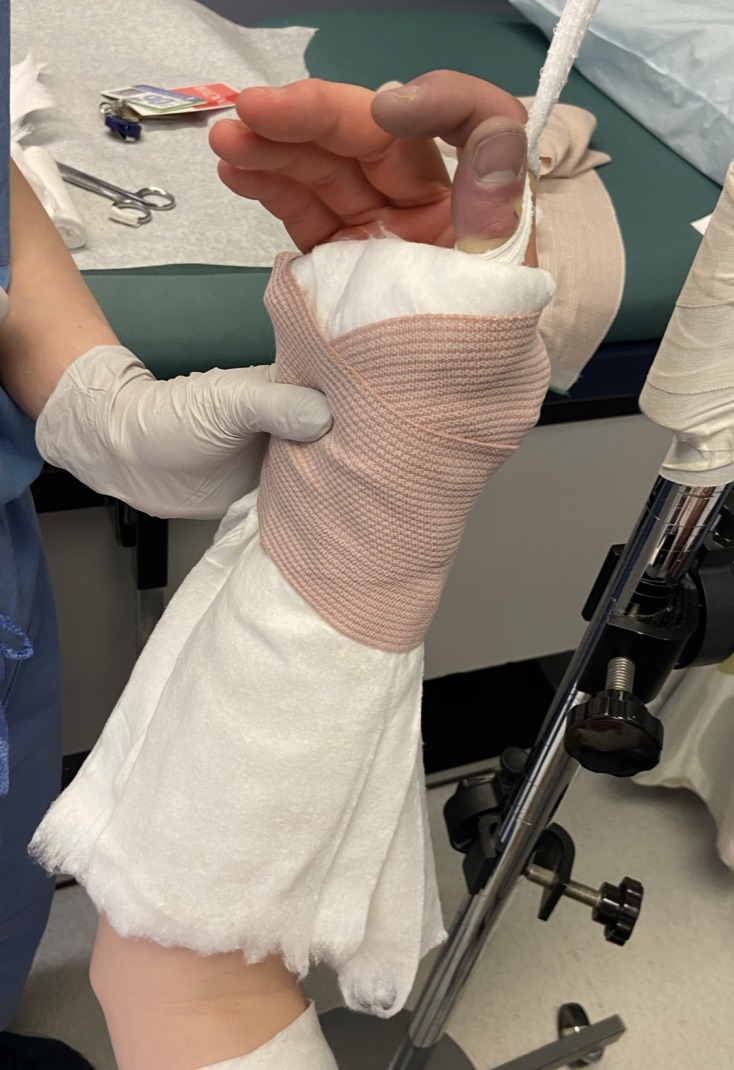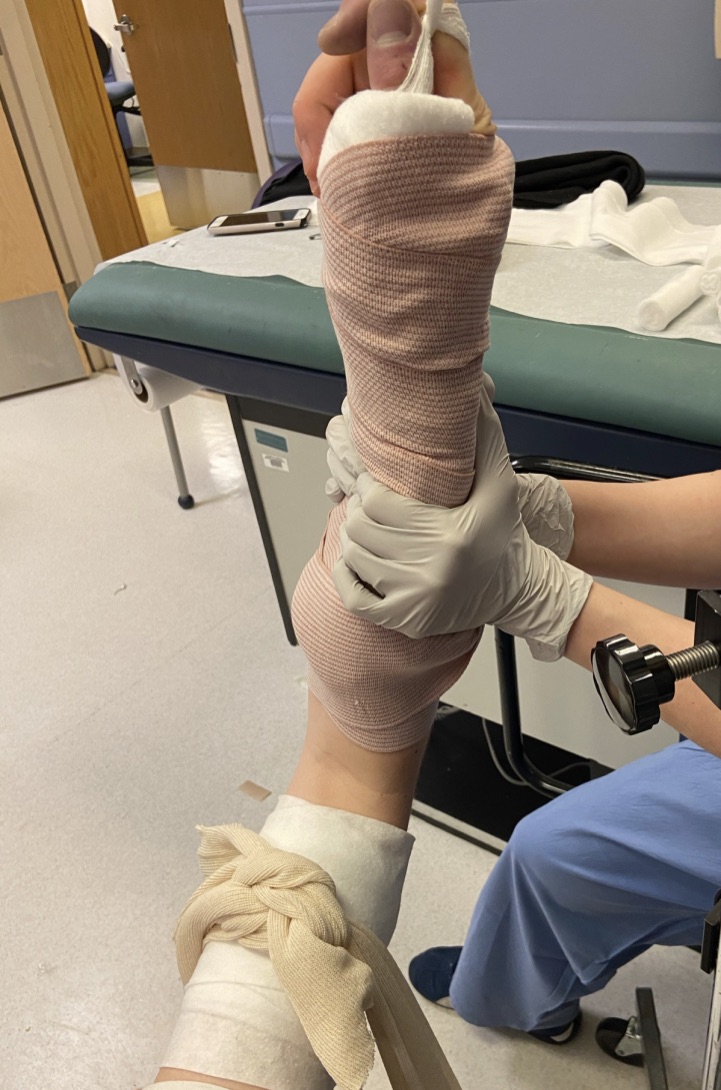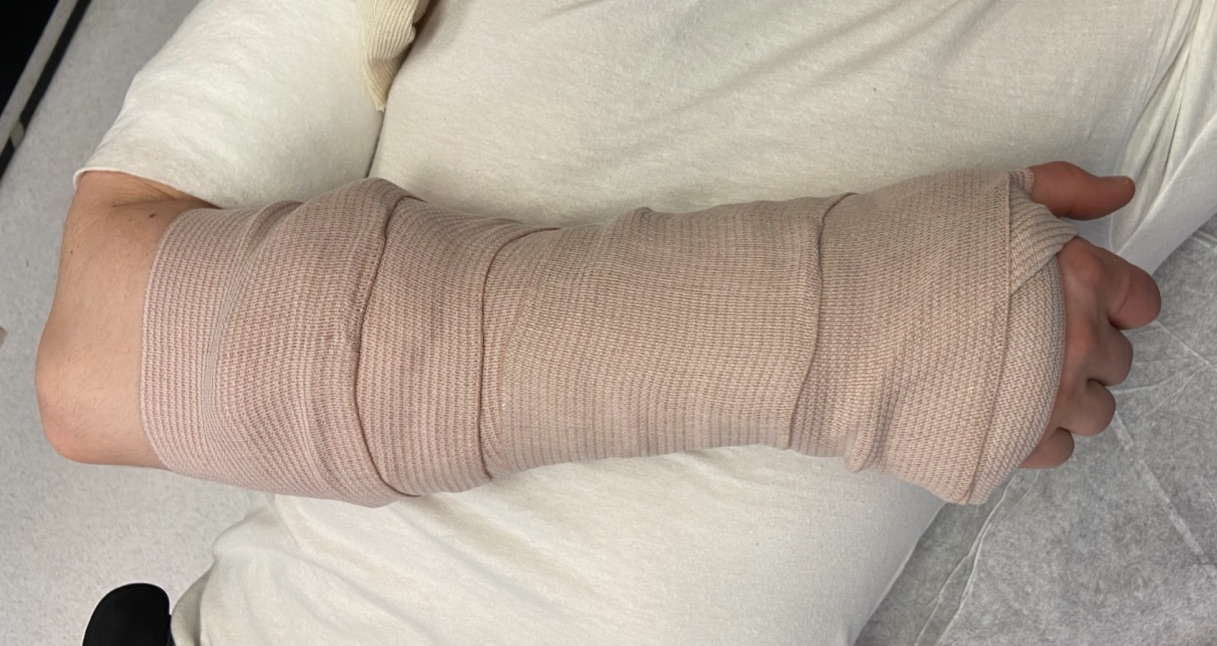Edited by Grace Xiong, Harry Lightsey, Brendan Striano - 7/1/2021
Indications/Contraindications
Indications: Distal radius fractures
Contraindications:
- Rotationally unstable forearm injuries (both bone forearm injuries) - must include the elbow, consider a sugartong or other type
- Injuries involving the carpal row or distal (thumb injuries - consider thumb spica splint. Other - consider ulnar gutter splints)
Materials/positioning
Materials:
- Bucket for water
- 3-4” webril (x3)
- 4” plaster (x2)
- 3-4” ace wrap (x2)
- Tape

Materials to assist for reductions:
- Kerlix rolls (x2)
- Weights (e.g. saline bottles/bags or formal weights)
Positioning:
- Supine or upright, patient at the ipsilateral edge of the bed
Optional: Suspend the extremity by kerlix roll finger traps (warn patients that fingers will turn purple and that this is normal)

Technique
Measure out splint:
The length of your plaster should go from the metacarpal joints to just distal to the elbow
Splint preparation:
- Roll out 4-6 layer sheets of webril, do this twice
- Roll out 8-10 layers of plaster to the same length. This will shrink upon dipping.

Splint application
Oftentimes, dorsal volar slab splints are placed with the patient's forearm suspended from an IV pole. In this situation, the slabs are placed onto the forearm then subsequently wrapped with an ACE wrap being mindful that the plaster is below the metacarpal heads.


Pearls & Pitfalls
Potential complications:
When used for distal radius fractures, one should be mindful of where to mold the plaster to best maintain the reduction. Gauging where to mold may be determined clinically, measuring off a known reference such as the thumb tip on injury X-rays, or using mini C-arm if available.
Tips for efficiency:
When used to maintain reductions, having all of the materials at bedside and ready for use is very helpful